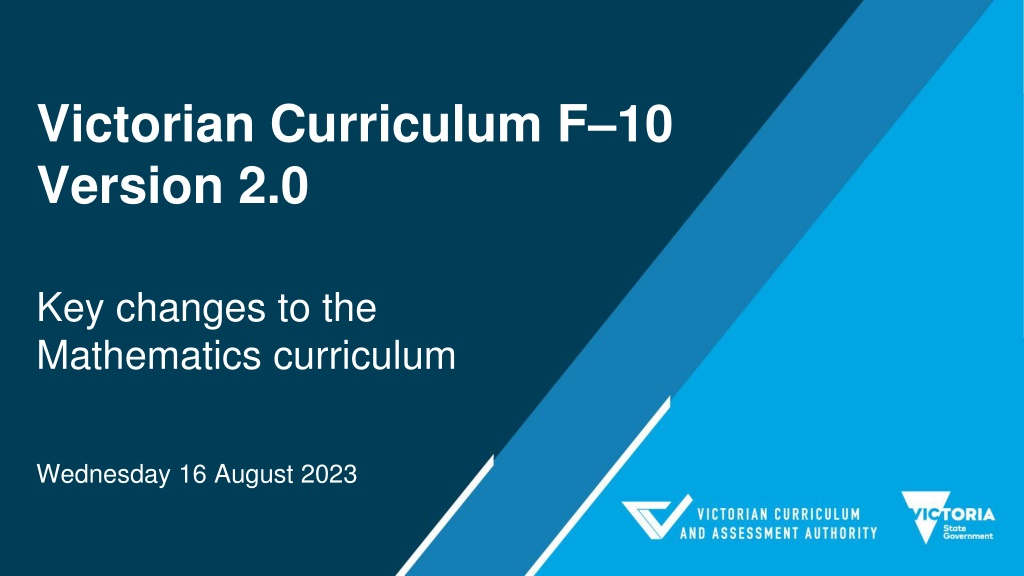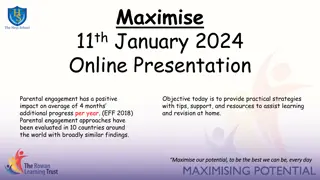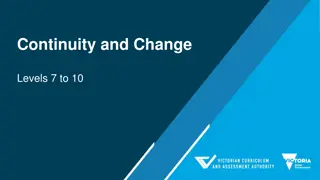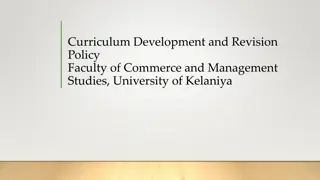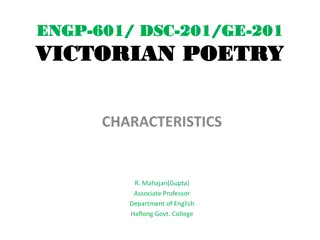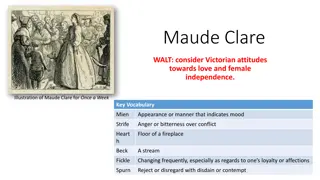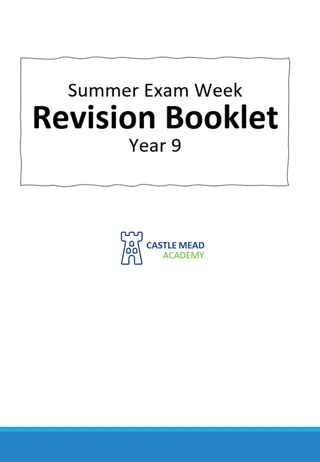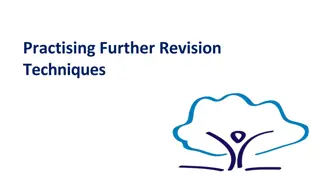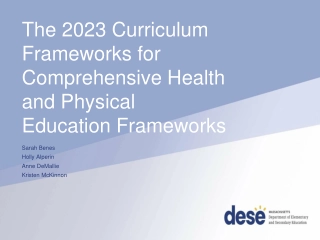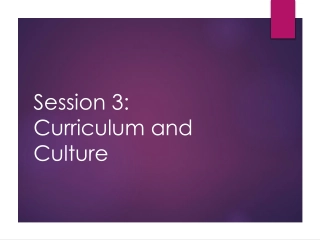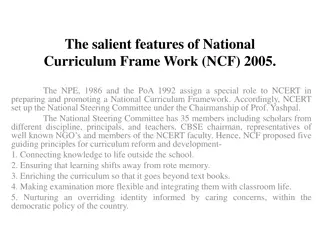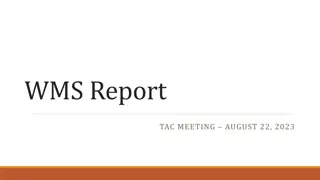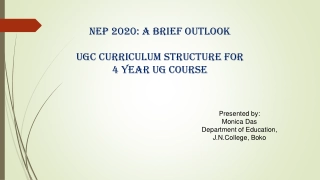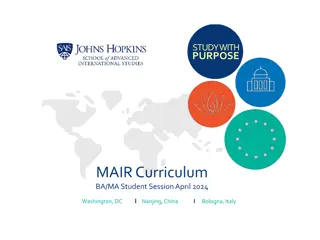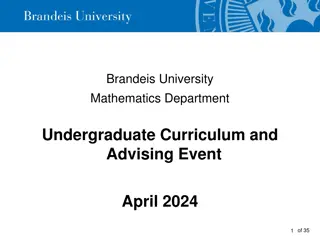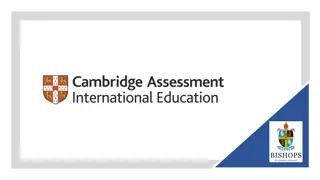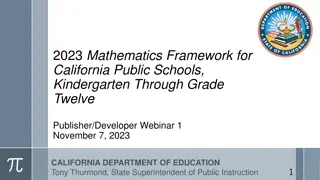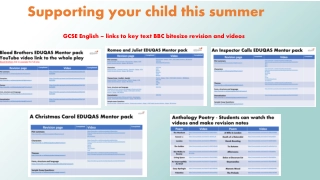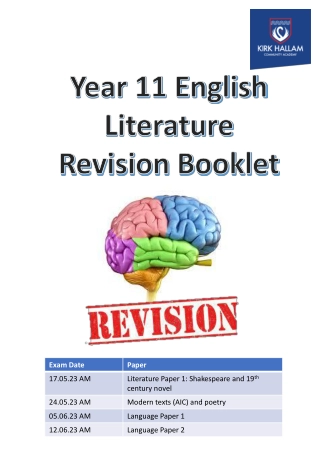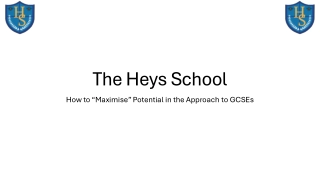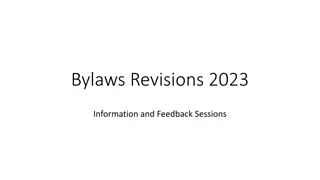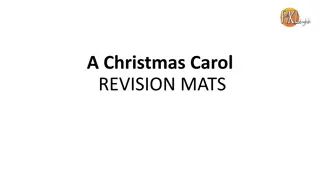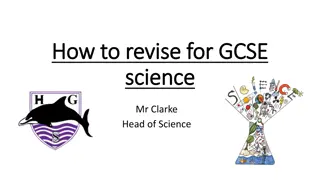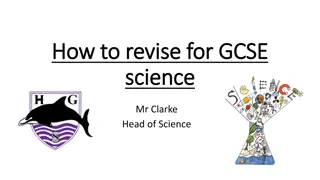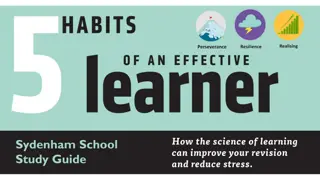Overview of Victorian Curriculum F-10 Mathematics Revision
This document outlines key changes in the Victorian Curriculum F-10 Mathematics curriculum, including acknowledgments of the traditional custodians of the land, objectives alignment, what has not changed, and the timeline for implementation starting from 2024. The revisions aim to provide more manageable pathways for teachers, support resources to improve achievement standards, and a high-quality curriculum for confident implementation by educators.
Download Presentation
Please find below an Image/Link to download the presentation.
The content on the website is provided AS IS for your information and personal use only. It may not be sold, licensed, or shared on other websites without obtaining consent from the author. Download presentation by click this link. If you encounter any issues during the download, it is possible that the publisher has removed the file from their server.
Presentation Transcript
Victorian Curriculum F10 Version 2.0 Key changes to the Mathematics curriculum Wednesday 16 August 2023
Revising the Victorian Curriculum F10 Acknowledgment of Country I would like to acknowledge the traditional custodians of the many lands across Victoria on which each of you are living, learning and working from today. For myself and those of us in the Melbourne metropolitan area, we acknowledge the traditional custodians of the Kulin Nations. When acknowledging Country, we recognise Aboriginal and Torres Strait Islander Peoples spiritual and cultural connection to Country/Place and acknowledge their continued care of the lands and waterways over generations, while celebrating the continuation of a living culture that has a unique role in this region. I would like to pay my respects to Elders past, present and emerging, for they hold the memories, traditions, culture and hopes of all Aboriginal and Torres Strait Islander Peoples across the nation, and hope they will walk with us on our journey.
Overview 1. Overview of the revision and familiarisation of the Victorian Curriculum F 10 project Gerry Martin Director, Curriculum Revision, VCAA 2. Revisions to the Mathematics curriculum Michael MacNeill Curriculum Manager, Mathematics, VCAA 3. Familiarisation Leyna Buller Senior Policy and Strategic Advisor (F 10 Revision), VCAA 4. Questions Panel
Objectives alignment with the Victorian Early Years Learning and Development Framework 1 2 5 6 maintaining Victorian priorities and standards provide senior secondary pathways more teachable and manageable 7 3 familiarisation and support resources that support Victorian teachers improve achievement standards 8 4 a high-quality curriculum that teachers can implement with confidence a digital platform for the curriculum that is fit for purpose, accessible and user-friendly
What has not changed? Overarching structure of the Victorian Curriculum F 10 will not change Current learning areas, capabilities and cross-curriculum priorities will remain Recognises the continuing importance of a discipline-based approach to learning Continue to offer EAL and Levels A D curriculum. These are to be revised shortly and incorporated into the Victorian Curriculum F 10 Version 2.0 in late 2024 (dates to be confirmed)
Timeline Phased implementation from 2024 onwards Victorian Curriculum F 10 Mathematics Version 2.0 published on 28 July 2023 Victorian government and Catholic schools can implement from 2024, with full implementation in 2025 Implementation in independent schools is at the discretion of each school in the sector 2022 2023 2024 2025 Familiarisation Full Implementation Revision Familiarisation Mathematics Start Implementation
Reporting Reporting requirements are set by the sector authorities All Victorian government and Catholic schools are required to provide written reports on student achievement against the Victorian Curriculum F 10 achievement standards for every student at least twice per year The Victorian Curriculum F 10 Version 2.0 will include revisions to the achievement standards to provide clarity and show progression Specific information can be found by contacting the: Department of Education Catholic Education Victoria Network.
Victorian Curriculum F10 Mathematics Version 2.0 Revisions Michael MacNeill Curriculum Manager, Mathematics, VCAA
Introducing Mathematics Version 2.0 Offers student the opportunity to engage with essential knowledge and skills, with enhanced connections to real-world experiences Reflects the expertise and feedback of Victorian teachers and academics A simplified and more manageable structure: embeds the mathematical proficiencies greater scope to make connections across the Mathematics curriculum Clearer content descriptions and better-aligned achievement standards that are less open to interpretation, supporting assessment Addresses contemporary concerns (NAPLAN, TIMSS, etc.) A future-facing curriculum Better sequencing of concepts, with stronger links across strands Stronger alignment with VEYLDF and senior secondary, which creates a continuum of learning from birth to 18+
Structural revisions overview The Mathematics curriculum introduction material: Rationale, Aims, Learning In Content now organised under 6 strands Level descriptions greater detail about the content, skills and expected outcomes at each level Achievement standards clearer articulation, progression and connection to content descriptions Content descriptions clearer articulation of the essential mathematical facts, procedures and skills Elaborations provide more examples to empower teachers to engage with the content
Levels F6 key revisions There are only 5 content strands at Foundation to Level 2 with Probability commencing at Level 3 to permit consolidation of foundational counting and abstract engagement strategies (numerals, fractions, time) Content resequenced to provide students opportunity to consolidate and master key skills (e.g. time to half hour) Greater emphasis on mathematical modelling and statistical investigation Increased prominence of computational and algorithmic thinking
Levels 710 key revisions Greater emphasis on mathematical modelling, statistical investigation and estimation, while retaining key foundational knowledge and skills as students approach senior secondary pathways Continued emphasis on computational and algorithmic thinking, including provision for pseudocode to support teachers who do not have background familiarity with simple coding languages A small number of new content descriptions that extend the scope of learning: Level 8 inclusion of 3-dimensional mapping; Level 10 inclusion of Planar graphs; Level 10 inclusion of logarithmic scales (not equations or laws)
Mathematics Version 2.0: Aims develop useful mathematical and numeracy skills for everyday life and work, as active and critical citizens in a technological world become confident, proficient, effective and adaptive users of mathematics become effective communicators of mathematics who can investigate, represent and interpret situations in their personal and work lives, think critically, and make choices as active, engaged, numerate citizens develop proficiency with mathematical concepts, skills, procedures and processes, and use them to demonstrate mastery in mathematics as they pose and solve problems, and reason with number, algebra, measurement, space, statistics and probability make connections between areas of mathematics and apply mathematics to model situations in various fields and disciplines develop a positive disposition towards mathematics, recognising it as an accessible and useful discipline to study appreciate mathematics as a discipline its history, ideas, problems and applications, aesthetics and philosophy
The 6 strands Number Algebra Measurement Space Statistics Probability The familiar dual-strands have been decoupled Teachers can continue to use the familiar connections between strand content and can also now explore new connections across different strand pairings For example, teachers may choose to connect content descriptions from Number and Space, or Algebra and Measurement, when designing teaching and learning units
Number Streamlined sequencing of number concepts and essential arithmetic Earlier basis for proportional reasoning through content focused on sharing and grouping Emphasis on efficient mental and written strategies and computation without digital tools in earlier levels Algebra Emphasis on patterns emerging through observations of arithmetic operations Clearer expectations of number facts and skills through patterns and computation without digital tools Computational and algorithmic thinking present at each level Measurement Strong foundation for understanding of space (in 2- and 3-dimensions) and time (duration) Increasingly sophisticated treatment of size, shape, relative position and movement of 2D shapes in the plane and 3D objects in space Renewed emphasis on estimation and choice of appropriate units, including log scales at Level 10
Space Continued emphasis on spatial location and transformations, evolving to 3D mapping at Level 8 Meaningful measurements of quantities, selecting appropriate metric units of measurement Exploration of inverse relations between quantities and inclusion of network diagrams at Level 10 Statistics Continued inclusion of data acquisition, representation and interpretation Analyse data using a variety of historic and contemporary data representations and draw appropriate inferences Inclusions of guided statistical investigations Probability (from Level 3) Recognise variation, assess likelihood and assign probabilities using experimental and theoretical approaches Increasingly sophisticated approaches to critically evaluate chance and data concepts Renewed emphasis on use of simulations to examine effect of large samples or sequence of trials
Victorian Curriculum Fand Implementation Mathematics Version 2.0: What has not changed? The sequence of foundational ideas (although now under 6 strands: Number, Algebra, Measurement, Space, Statistics and Probability) The purpose of the elaborations Logical sequencing of concepts in content descriptions and achievement standards The level descriptions although they have been revised to better articulate the proficiencies of Understanding, Fluency, Reasoning and Problem-solving The clear presence of algorithmic and computational thinking Clear links between content descriptions and achievement standards The inclusion of Level 10A, with content designed to support teachers and students in pursuing higher-level mathematics in their senior schooling years VCAA | 17
Scope and sequence Mathematical concepts are developmentally organised Considers the progression of learning within a strand Includes content descriptions and achievement standards
Connecting content across strands Level 8 Measurement Number Unit outline example Content description recognise irrational numbers in applied contexts, including and numbers that develop from the square root of positive real numbers that are not perfect squares, and recognise that irrational numbers cannot develop from the division of integer values by natural numbers (VC2M8N01) This covers: the recognition, demonstration and proof of Pythagoras theorem, and its use to calculate side lengths in right-angles triangles application of the theorem to solve practical problems involving lengths and distances in the plane Pythagorean triples. use Pythagoras theorem to solve problems involving the side lengths of right- angled triangles (VC2M8M06) Achievement standard extract Students recognise irrational numbers as numbers that cannot develop from the division of integer values by natural numbers and terminating or recurring decimals. They use Pythagoras theorem to solve measurement problems involving unknown lengths of right-angled triangles.
Interwoven mathematical processes Content description clarity has been improved to more clearly articulate the proficiencies of Understanding, Fluency, Reasoning and Problem- solving The key mathematical skills of mathematical modelling and statistical investigations feature more prominently, helping students to connect the more abstract concepts with real-world experiences and concepts Changes to content descriptions mean they better encapsulate and articulate the scope of mathematical facts and associated procedures, incorporating the skills students need for future-facing educational needs
Mathematical proficiencies The proficiencies are fundamental to learning mathematics and working mathematically The proficiencies are developed across the 6 strands They are the what and how of mathematics in action They enable students to respond to familiar and unfamiliar situations, make informed decisions, and adopt reflective approaches to verify and evaluate solutions Fluency Strands Understanding Reasoning Problem solving
Understanding Build and refine robust knowledge of adaptable and transferable mathematical concepts and structures Make connections between related ideas and progressively draw on reasoning skills Develop procedural fluency when students connect related ideas, represent concepts, and identify and describe commonalities and differences in content Fluency Develop, practise and consolidate skills and refine their choices of context-appropriate procedures Carry out procedures flexibly, accurately, efficiently and appropriately; and apply their recall of factual knowledge and understanding of concepts readily Connect conceptual understanding to learned strategies and procedures, and recognise robust or multiple ways of responding to problems in context
Reasoning Central to thinking and working mathematically a critical component of proficiency in mathematics Increasingly sophisticated capacity for logical thought and actions, such as conjecturing, hypothesising, analysing, proving, experimenting, modelling, evaluating, explaining, inferring, justifying, refuting, abstracting and generalising Develop an increasingly sophisticated capacity for logical, statistical and probabilistic thinking and actions Problem-solving Solve problems from both abstract and real-world contexts, to make choices, interpret, formulate, model and investigate problem situations, select and use technological functions and communicate solutions A process of planning, choosing and applying strategies and heuristics to find a solution to the problem, and reviewing and analysing their solution
Proficiencies in content descriptions Content description clarity has been improved so that content descriptions more clearly articulate the proficiencies. Current Mathematics curriculum Mathematics Version 2.0 Recall multiplication facts up to 10 10 and related division facts (VCMNA155) Recall and demonstrate proficiency with multiplication facts up to 10 10 and related division facts, and explain the patterns in these; extend and apply facts to develop efficient mental and written strategies for computation with larger numbers without a calculator VC2M4A02 Investigate number sequences involving multiples of 3, 4, 6, 7, 8, and 9 (VCMNA154)
Computational thinking Decomposition Break down the problem into simpler, less complex components Pattern recognition Classify patterns in data and organising data logically Representation and interpretation Abstraction Remove non-essential information and focus on principal structure only Algorithms A sequence of instructions that can be performed
Alignment: Content descriptions and achievement standards Current Mathematics curriculum Level 4 Patterns and algebra Use equivalent number sentences involving addition and subtraction to find unknown quantities (VCMNA163) Mathematics Version 2.0 Level 4 Algebra Find unknown values in numerical equations involving addition and subtraction, using the properties of numbers and operations VC2M4A01 Students find unknown values in numerical equations involving addition and subtraction Content description Students identify unknown quantities in number sentences Achievement standard extract
Designing assessment Achievement standards: continuum of learning Strand Level 6 Level 7 Level 8 They solve problems using the properties of prime, composite, square and triangular numbers. They solve problems involving squares of numbers and square roots of perfect square numbers. Number students recognise irrational numbers as numbers that cannot develop from the division of integer values by natural numbers and terminating or recurring decimals. They use the formula for the area of a rectangle and angle properties to solve problems. They establish and use formulas for the areas of triangles and parallelograms and the volumes of rectangular and triangular prisms to solve problems. Students use appropriate metric units when solving measurement problems involving the perimeter and area of composite shapes, and volume of right prisms. Measurement
Mathematical modelling A simple cyclic scheme where real-life problems are translated into mathematical language The cycle may be repeated as necessary to refine the model Develop mathematical model or formulate problem Real-world or theoretical context Apply mathematical model or use problem-solving strategies and techniques Interpret results and refine model or problem and approaches START
Mathematical modelling Level 7 example Content description use mathematical modelling to solve practical problems involving rational numbers and percentages, including financial contexts such as best buys ; formulate problems, choosing representations and efficient calculation strategies, designing algorithms and using digital tools as appropriate; interpret and communicate solutions in terms of the situation, justifying choices made about the representation (VC2M7N10) Elaboration modelling financial problems involving profit and loss, credits and debits, gains and losses; for example, holding a fundraising sausage sizzle and determining whether the event made a percentage profit or loss
Statistical investigations Level 5 example Content description plan and conduct statistical investigations by posing questions or identifying a problem and collecting relevant data; choose appropriate displays and interpret the data; communicate findings within the context of the investigation (VC2M5ST03) Elaboration posing questions about insect diversity in the playground, and collecting data by taping a one-metre-square piece of paper to the playground and observing the type and number of insects on it over time
Level 10A Continues to provide content for students at Level 10 to extend their studies into mathematical areas of interest Continues to provide students and teachers with a set of content cognitively positioned between Level 10 and Units 1 and 2 VCE Permits students to explore further concepts positioned at Level 10 Designed to complement, not as a substitute for, Level 10 content Not a standalone level no achievement standards Not required content for access to any of the VCE Mathematics suite Content is organised by strand to facilitate sequencing Content may be selected by the student for investigation or by the teacher
Victorian Curriculum F10 Mathematics Version 2.0 Familiarisation Leyna Buller Senior Policy and Strategic Advisor (F 10 Revision), VCAA
Mathematics familiarisation: Professional learning Date Wednesday 23 August 2023 Time 4pm 5pm Focus Understanding the Mathematics learning area and changes (primary) Audience/s Primary teachers Specialist Mathematics teachers Secondary Mathematics teachers Wednesday 30 August 2023 4pm 5pm Understanding the Mathematics learning area and changes (secondary) This meeting and the leaders briefing will be made available on our website.
Mathematics familiarisation: Modules Audience Curriculum Area Leader (Mathematics) Primary Primary Teacher (Mathematics) Curriculum Area Leader (Mathematics) Secondary Secondary Teacher (Mathematics) Understanding the learning area Changes to the learning area Using the continuum of learning in the achievement standards to plan assessment programs Mapping mathematical concepts across levels Unique features of the learning area: Understanding and applying mathematical concepts in teaching, learning and assessing Approaches to designing a teaching and learning program across levels using the curriculum Understanding the learning area Understanding the learning area Changes to the learning area Using the continuum of learning in the achievement standards to plan assessment programs Mapping mathematical concepts across levels Unique features of the learning area: Understanding and applying mathematical concepts in teaching, learning and assessing Approaches to designing a teaching and learning program across levels using the curriculum Understanding the learning area Chapter 1 Chapter 2 Chapter 3 Using achievement standards to design assessment tasks Using achievement standards to design assessment tasks Designing a teaching and learning unit Designing a teaching and learning unit Chapter 4 Chapter 5 Approaches to designing a teaching and learning program within a level Approaches to designing a teaching and learning program within a level Chapter 6
Mathematics familiarisation: Support materials Artefact Glossary Scope and sequence documents Comparison of curriculums document Introducing Mathematics Version 2.0 Exemplar approaches to assessment using the revised achievement standards Curriculum Area Maps: Mathematics templates for schools to populate, and exemplars provided for Levels 3 and 8 Curriculum Area Plan: templates for schools to populate and Mathematics exemplars provided for F 6 and 7 10 Teaching and learning unit by learning area/discipline and year level: templates for schools to populate and Mathematics exemplars for units in Levels 3 and 8 Mathematics leaders guide how to support teachers and schools to update their teaching and learning programs. Includes descriptions of how to engage with the whole-school curriculum planning templates Mathematics teachers guide how to update to update their teaching and learning programs Term 3 Term 4
Introducing Mathematics Version 2.0 High-level overview of the Victorian Curriculum F 10 Mathematics Version 2.0 Quick facts Key considerations Key changes
Mathematics: Comparison of curriculums document Comparison of the current Victorian Curriculum F 10 Mathematics and the Victorian Curriculum F 10 Mathematics Version 2.0 Provides concise commentary on the changes that have occurred in the achievement standards and content descriptions Can be used to initially assess the scale of impact on teaching and learning units
Digital Assessment Library The Digital Assessment Library (DAL) delivers free, high-quality online classroom assessments, providing teachers with meaningful and timely information about student learning and progress. All assessments are directly aligned to the Victorian Curriculum F 10. The DAL contains over 137 Mathematics assessments. The VCAA is progressively releasing assessments that align with and support the implementation of the revised curriculum. You can find out more about the DAL via the VCAA website.
Links For information on the familiarisation of Mathematics Version 2.0, including supporting resources and registration for webinars VCAA website Mathematics Version 2.0 For Mathematics Version 2.0 curriculum Victorian Curriculum F 10 website Mathematics Version 2.0 For general information about the Victorian Curriculum F 10 Revision VCAA website Victorian Curriculum F 10 Version 2.0
Contact Victorian Curriculum F 10 Revision Project tel: 03 7022 1306 email: vcaa.f10.revisionproject@education.vic.gov.au
Subscribe to the F10 Curriculum update https://www.vcaa.vic.edu.au/Footer/Pages/Subscribe.aspx
